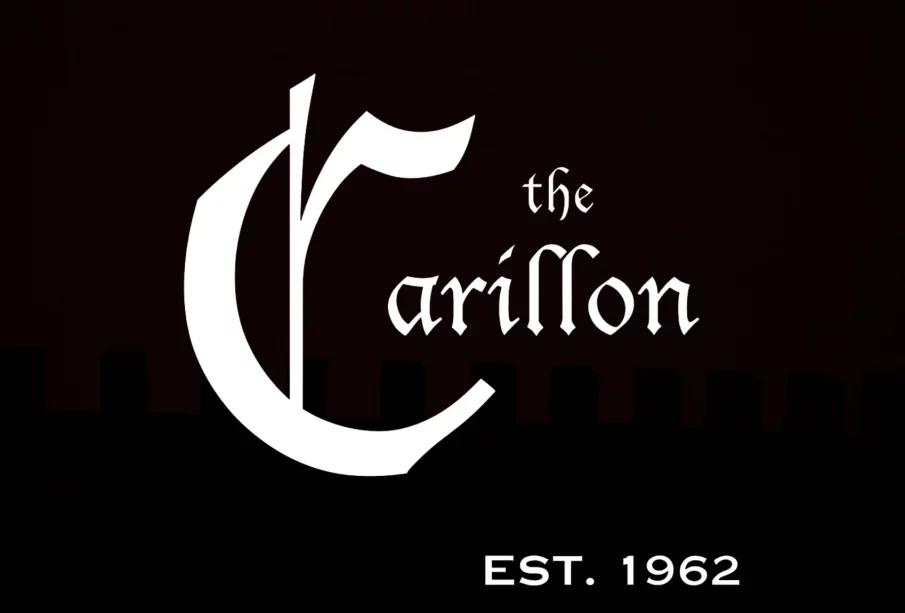A journey through the Carillon’s history of reporting, advocating, and making a difference
Though I’ve been a student at the University of Regina since 2021, my first major interaction with our students’ newspaper came only recently in the summer of 2025. As a student assistant, I was given the task of inventorying all the issues of the Carillon that were stored in the Dr. John Archer Library’s Archives & Special Collections. At the time, the Carillon had published approximately 1,475 issues which spanned over six-decades of student journalism.
As I began to organize the inventory data for each of their 63 volumes, I noticed that beneath the layer of the articles and photos lied a fascinating reflection of how editorial decisions, layouts, and the overall message to the students shifted through the decades. Furthermore, these changes were in concurrence with the major changes that occurred in Canadian society. My analysis of the Carillon catalogue, presented from an archival perspective, is centered on observing a decade-by-decade reposition of content, focus, and social messaging that occurred via specific editors, staff, and eras of social movements.
While identifying these changes are important to speculate on the representation of the Regina College and later the University of Regina (UofR) student body in each decade, I will also observe general themes that are maintained throughout the catalogue and stand out as important to the Carillon’s staff and readers, no matter the decade.
The beginning of it all
The first issue of the Regina College student newspaper ever published was released on October 12, 1962, under the name You Name It! It established a student-led competition for the naming of the new newspaper. Additionally, it marked an immediate and interactive initiative of the newspaper to represent the ideas of local students – a theme that I’m proud to say remains consistent in today’s Carillon.
The political activism in the 60s
Throughout the 1960s, the Carillon held a particular focus on local politics, mainly the elections within the university and Regina districts. The headlines and general layout resembled the quick, catchy tone that was characteristic of political newspapers at the time, and coloured font was experimented with sparingly.

Interestingly, many of the advertisements for local businesses, clubs, and events were often hand-drawn, including advertisements for the Co-operative Commonwealth Federation and Liberal parties that urged students to vote in elections. With such a deliberate focus on local politics, it’s predictable that there was a palpable tension in each article, student letters to the editor, and printed statements from student leaders, particularly regarding the Student’s Representative Council which later became known as the University of Regina Students’ Union (URSU).
As the decade shifted into the late 1960s, the Carillon embraced the new social wave of increased promiscuity, curiosity about drugs, and political and social movements being brought to the forefront of media representation. One of my favourite article headlines that I believe serves as a summary of this exciting shift came in 1967, when an op-ed piece was titled “Was Jesus Christ a Hippie?”.

Topics of religion, sexuality, and oppression within social structures were brought into conversation together, and historical events such as the 1967 Detroit Race Riots, the war in Vietnam, and the Quiet Revolution in Quebec were presented in tandem with local university sporting and political events.
The late 1960s also brought on an obvious infatuation with birth control and abortion-related issues. Articles reprinted from pro-choice and pro-life sources showed a commitment to acknowledge the spectrum of student beliefs on campus; there was, however, a perceivably larger support for pro-choice pieces that promoted medical awareness and advocated for access to safe abortion resources. Overall, the 1960s established the Carillon as a distinct source for local and international political information for students, as well as a purveyor of the progressive social attitude characteristic of the late 1960s and early 1970s.
The revolutionary 70s
The early 1970s issues represented a continuation of the progressive coverage of social reform movements, but with a much more overtly revolutionary and anti-establishment attitude. Activism related to the Civil Rights Movement and protests against the war in Vietnam were routinely covered, often blending the Canadian and American current events.

This revolutionary tone took on much more targeted opponents: the government, the police system, and the university leadership. In terms of the layout, this meant that front-page headlines were often substituted with a photo or a phrase that drew the reader’s attention. For example, after the deaths of four Kent State University students who were shot by the National Guard in 1970 during an on-campus protest against American militarization in Vietnam, one of the Carillon’s issue included photos of the four students with the large caption that said, “Starting May 4th, You Don’t Have to Wear A Uniform to Die for Your Country.” There was also an increase in the coverage of socialist, communist, and feminist speakers who visited the UofR campus. This included the Black Panther leader Fred Hampton who spoke in Regina to a crowd of around 700 students less than a month before he was murdered in Chicago by the police.
Perhaps the most obvious expression of the Carillon’s intense, direct involvement with local protests and politics was the arrest of two Carillon editors, John Gallagher and Warren Caragata, in separate instances. For the record, the charges of rioting against Gallagher and libel against Caragata were dropped – verdicts which were celebrated within the subsequent Carillon issues.
Another meaningful shift in the 1970s was the Carillon’s newfound concern with targeting capitalism as the root of oppression in the West. This manifested in special issues and supplements on unemployment, as well as an early attempt to discuss pollution and climate change that was carried forward into the 1980s.

The anti-capitalistic and revolution-oriented tone must have been shared by a portion of the student body, as many letters to the editor and student responses revealed a similar stance, although there were still articles printed that opposed those views. As the decade turned in the mid-1970s, the revolutionary tone dimmed, and the focus seemed to return to the UofR campus by going back to highlighting events and news that students would require in their daily lives. There was also a new inclusion of movie and play reviews by the staff and light-hearted student questionnaires.
Today’s Carillon carries forward the unique aspects of each preceding decade, including a sharp attention on addressing local and global injustices, a consistent humour that speaks both for and to the student body, and a dedication to perpetuate social progress through reliable journalism. – Emily Reid
Optimism on the rise in the 80s
The Carillon in the 1980s saw an emphasis on ironic and self-deprecating humour that embraced the serious social and political topics of the 1970s with the shift towards a more optimistic tone. The paper’s layout went back to the black-and-white, professional look of the 1960s with a noticeable decrease in illustrations. The staff appeared as a more cohesive group, known often as the Carillon Collective.
Like the 70s, sexuality was a repeated concern, particularly in terms of pornography in the media and the negative impacts of gender-based discrimination on the self-esteem and lives of modern women. The Carillon expressed consistent support for the Women’s Centre on campus and began to highlight events of misogyny experienced by faculty and students along with sexual assault and rape trials.

The issues generally appeared more balanced, with a clearer distinction of the entertainment, sports, and editorial sections that led to the adoption of a more neutral source of information for students who may not be solely concerned with politics. But there remained a commitment to discussing local and global injustices. Topics like the war in Vietnam and the Civil Rights movement were covered, but with a more historical view that offered a distanced perspective of the events. For example, articles like “The Quebec Crisis 10 Years Later” and “Vietnam Re-examined” presented a new approach of representing social concerns which was solution-oriented rather than solely critical.
Maintaining the status quo in the 90s
The Carillon welcomed the 1990s by celebrating Dr. Donald Wells as the new university president, but this admiration was relatively short lived. An issue in 1996 later labelled him “Canada’s fattest university president” – a humorous jab that continued the tradition of criticism against university authority figures established in the 1970s. Layout changed with having coloured photos featured on the front pages with the rest of the pages remaining grey as in the 80s.

Topics such as sexuality and recognition of social oppression continued to be prioritized, with a particular focus on the Gulf War, encouraging students to participate in peaceful protests. Student issues, such as the defunding of language programs within the university and the resignations of URSU leaders, were presented in a way that mirrorred a telenovela. With this was the heavy usage of ironic and dramatic phrasing while maintaining an air of detachment that wasn’t apparent in the earlier decades. This was paired with a large influx of movie, play, and music reviews that created a more balanced, positive tone to counteract the continued coverage of heavy topics.
Centerspreads were equally dedicated to silly, light topics like the 1993 article “To Pierce or Not to Pierce” about Canadian piercing habits along with some serious subjects such as a 1994 article on female genital mutilation, or the unmonitored spread of HIV/AIDS on Indigenous reserves. Interestingly, the Carillon of the 1990s also began a trend of reflecting on its past catalogue that is continued today. One of my favourite slogans from this era being “Running editorials from 1972 since 1962” that appeared in 1997.
The new world of the 2000s and 2010s
The 2000s and 2010s share a large emergence of colour throughout the issues, as well a more modern layout with the increase in computerization. The 09/11 attacks in America were a recurring topic, though often through a lens of reframing Islamophobic beliefs in Canadian society and protesting the military conflict in Iraq.

The inclusion of horoscopes and a stark increase in special issues show that the staff were experimenting with their image at the turn of the century, and it was ultimately for-the-better as the Carillon began to resemble the vibrant, charismatic newspaper that exists on the UofR campus today. University life became a central theme, and the humour and wit of the old issues were combined with the perspective of the modern world student. Articles that celebrate the UofR’s history, multiculturalism, and pride became the core of the Carillon.
Today’s Carillon carries forward the unique aspects of each preceding decade, including a sharp attention on addressing local and global injustices, a consistent humour that speaks both for and to the student body, and a dedication to perpetuate social progress through reliable journalism. Throughout my experience of researching the catalogue, I can honestly say that the Carillon of the past and present serves to serve and represent the UofR students of their time. And as the last print newspaper published in Regina, I’m grateful to see the Carillon issues on our news-stands and in students’ hands, as we hold onto its long and fruitful history.










